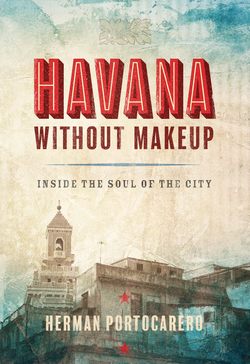Читать книгу Havana without Makeup - Herman Portocarero - Страница 15
На сайте Литреса книга снята с продажи.
Оглавление8.SANTERÍA AND THE RACIAL DIVIDE
As late as the early twentieth century, Fernando Ortiz saw a deep cultural divide between black and white Cuba. In fact, he was wrong. Already in the middle of the 1800s a remarkable figure, Andrés Facundo Cristo de Dolores Petit (1830–1878), a Cuban criollo of partly Haitian ancestry, not only integrated elements of Yoruba and Congo traditions in his Regla Kimbisa, but also promoted the rites as a culture unifying Cubans of all races in the struggle against Spain. He was the first to think of a Cuban national identity, or cubanía, in post-racial terms.
Through a bit of orisha-inspired detective work, we even know where the very first initiation of white Cubans into the African rites took place: in 1863 at number 115 of the street then called Calle Ancha del Norte, now Calle San Lázaro, between Galiano and San Nicolás. Petit was a visionary well ahead of his time. Black Cubans accused him of seeking to initiate whites for financial gain only, but that was slander. It’s known that the first white santeros were indeed from prominent families, but also that Petit responded to their own request motivated by their anti-Spanish patriotism.
Santería trade in Cuatro Caminos
Today, when it comes to Santería, the color barrier has completely disappeared. This is immediately obvious in Havana, where recent initiates wear their white clothes and the collares (necklaces) of their master-orishas for a full year. You’ll spot those iyabo, as they are known in Cuban Yoruba, of any skin color.
Besides being a racial unifier, la religión has also become a strong link between the island and Miami Cubans, bypassing divisive politics.
When you see elderly people de iyabo in Havana, it means that they have been saving their entire lives to pay for the initiation and its requirements. It’s a costly procedure because of all the implements you have to buy. But you’ll also see initiated young children, and in some cases a baby is dedicated to the orishas while still in the womb, or when born en zurrón, still wrapped in the amniotic sac, which in Cuba is considered an omen of good fortune.
A recently initiated Santería iyabo on lively Calle Monte in Centro Habana
The white clothes of the year of noviciate add a special touch to Havana’s elegance. Girls and women have to cover their head and shoulders and wear white stockings. Together with the long skirts and the white umbrellas they favor, the embroidered shawls give many female iyabos a traditional eighteenth-century look, and form beautiful and spontaneous passing vignettes against the backdrop of the buildings in Old Havana. As part of the tourist attractions in the old town, women in colorful traditional dress and smoking big cigars are sent about to have their picture taken with visitors, but the dignified iyabos dressed in white are real.
The white clothes and the colorful collares disappear after one year. The initiate will have a yearly celebration on the anniversary of her hacerse santo and has assumed life-long obligations and interdictions in exchange for the spiritual ease drawn from knowing one’s path in life, as being determined by this or that orisha as an archetype of behavior. In that sense, there is a strong psychological factor in the traditions.
Long after the initiate can no longer be so easily identified, discreet bracelets with the colors of the orisha will be peeping out of sleeves or cuffs, where one least expects it, including from members of the communist party. That was unthinkable only a few years ago. Let’s take a look at how that came about.
